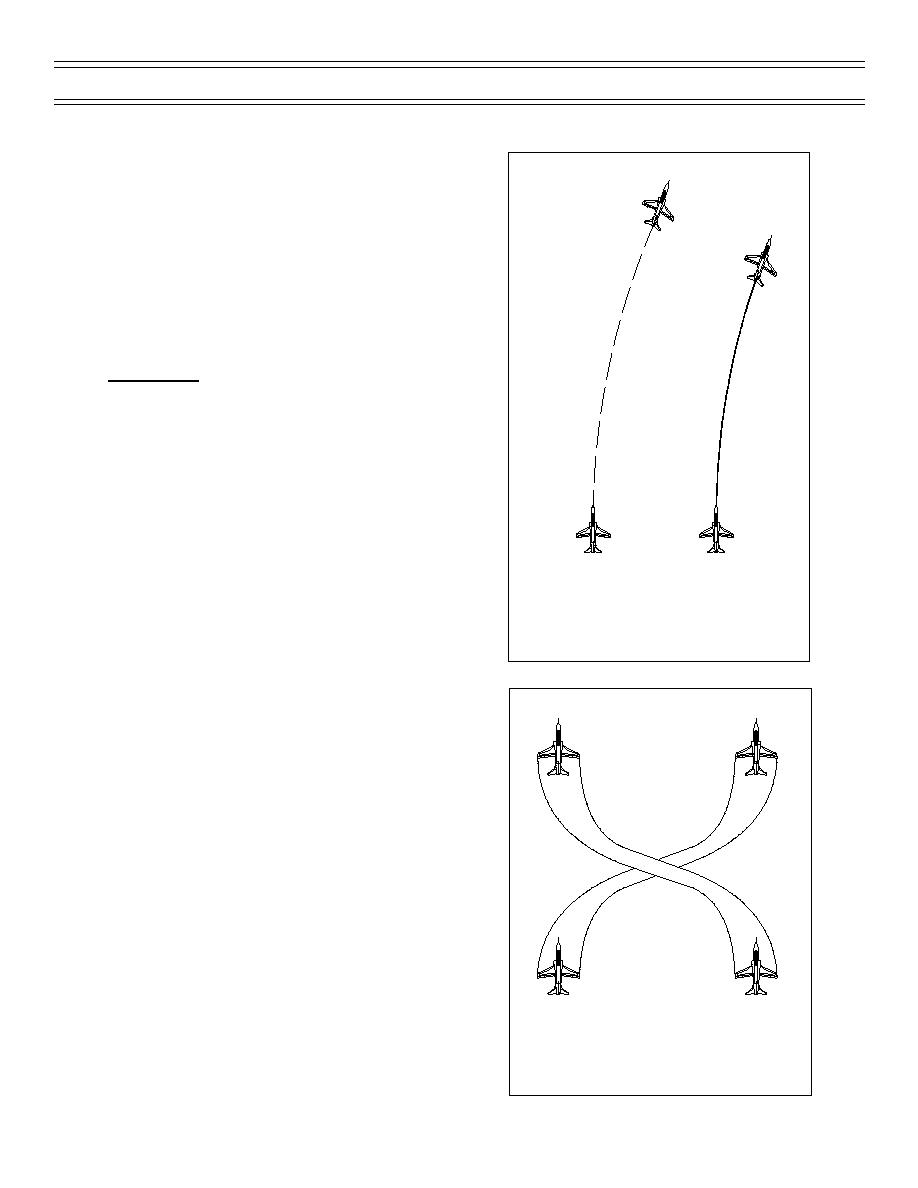
Tactical Formation
Flight Procedures
If you arrive on the bearing line before the lead rolls out of
his turn, raise your nose and adjust AOB to keep from
going acute and play the roll-out to arrive in combat
spread as the lead rolls out.
If you find yourself out of position after the turn, it is
probably attributable to improper AOB, timing and/or
airspeed control. If you are sucked, lower the nose, add
power, accelerate until arriving on the abeam bearing,
then raise the nose and reduce power to maintain
300 KIAS.
Check Turns
The lead initiates the turn (Figure 7) by calling, “[Call
sign], check left/right [# of degrees].” The turn may be 30
degrees or less. The wingman acknowledges, “[Two].”
Both members of the section immediately turn to the new
heading, with the wingman correcting to maintain combat
spread position.
SHACKLE TURNS
Shackle turns cross the wingman from one side of
combat spread to the other or redress the flight in an
expedient manner (Figure 8). The lead initiates the turn
Lead
Wingman
by calling, “[Call sign], shackle [heading].” The wingman
acknowledges with “[Two].”
Figure 7: CHECK TURN
Ideally, both aircraft turn into each other at 14 units. If the
maneuver is begun in proper combat spread position,
both the lead and wingman will conduct about a
45-degree turn prior to the reversal. If the wingman is
sucked at the beginning of the maneuver, he should use
less pull and less turn prior to the reversal. If the
wingman is acute prior to the maneuver, he should use a
harder pull toward the lead in an attempt to pull more than
45 degrees prior to the reversal. The subsequent turn out
of the reversal should be adjusted so that the wingman
rolls out in proper combat spread. The lead may have the
flight shackle about the original heading or up to about 30
degrees off the original heading. The wingman should
adjust his pull and time his reversal accordingly to arrive
out of the turn in combat spread on the heading called for
by the lead.
ENGAGING TURNS
Engaging turns maneuver the section to engage a bogey
who is not an immediate threat. Therefore, they are
energy sustaining turns. In an actual combat arena these
turns are normally called by the first aircraft (tactical lead)
with the tally. However, in the CNATRA environment,
they will be called by the lead.
Figure 8: SHACKLE TURN
Page 13
(4-03) Original



 Previous Page
Previous Page
